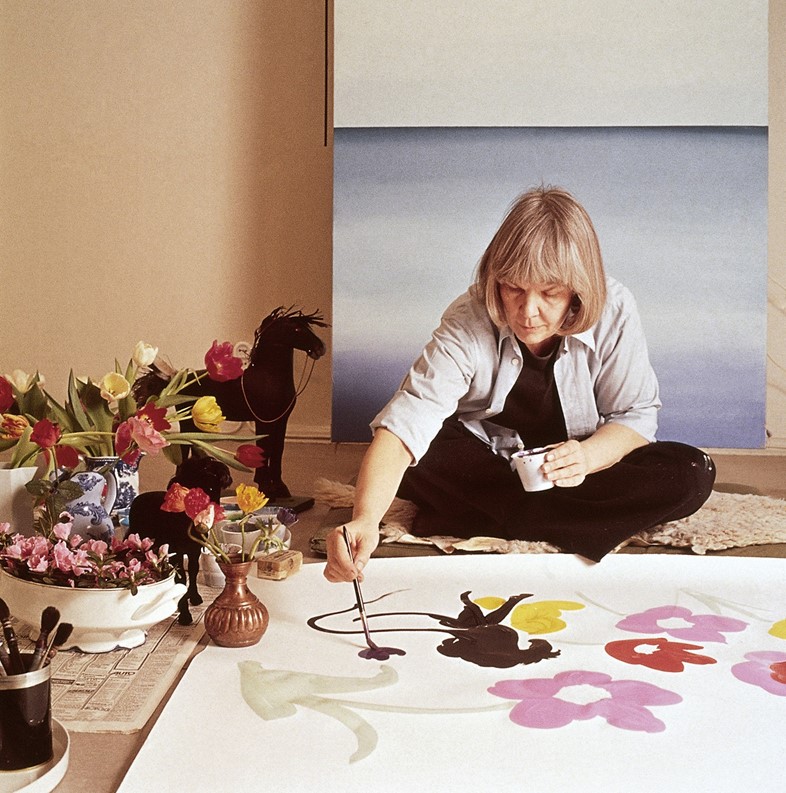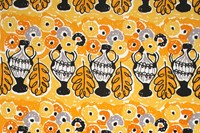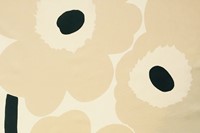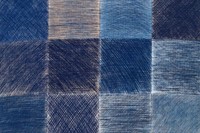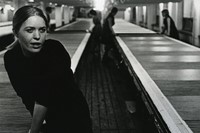We examine the history of the world renowned textile company, whose bold and brilliant designs feature in Junya Watanabe’s S/S18 collection
Who? Finnish design house Marimekko was founded in 1951 by Viljo and Armi Ratia, and has since become renowned the world over for its vibrant graphic prints. “Marimekko was conceived in post-war Finland in a time of austerity, and when there was a distinct lack of printed fabric,” explains senior print design specialist Petri Juslin, who has worked at the company for over 30 years. “Mr Ratia wasn’t a very good businessman, so that is when his wife Armi Ratia had the idea of making dresses out of such fabrics. Their vision was to make colourful prints, and bring joy to people’s lives.”
The couple’s first full-time employee was Maija Isola, responsible for the creation of the now iconic Unikko. Inspired by the poppy flower, Isola’s design was an act of rebellion against Ratia’s insistence that the company would never produce a floral print. Suffice to say, it went on to become a Marimekko signature.
In 1960, designer Annika Rimala joined the Marimekko family, and it was during this period that company was brought to the forefront of popular culture, as her work was often featured in international fashion and lifestyle magazines. Jacqueline Kennedy solidified Marimekko’s reputation as a household name when she bought several dresses printed with Rimala’s designs, and wore them during her husband’s presidential campaign.

“There are hundreds of designers who have worked at the company throughout the years, but Annika Rimala was one of the most important,” reiterates Juslin. “She was well known for Tasaraita, which was one of the first ever unisex print designs. This was 1968, and she designed a striped jersey T-shirt that could be worn by men and women and as a statement of equality between genders.” Rimala is also famous for creating the Puketti (bouquet) print, Keidas (oasis) and Tarha (garden).
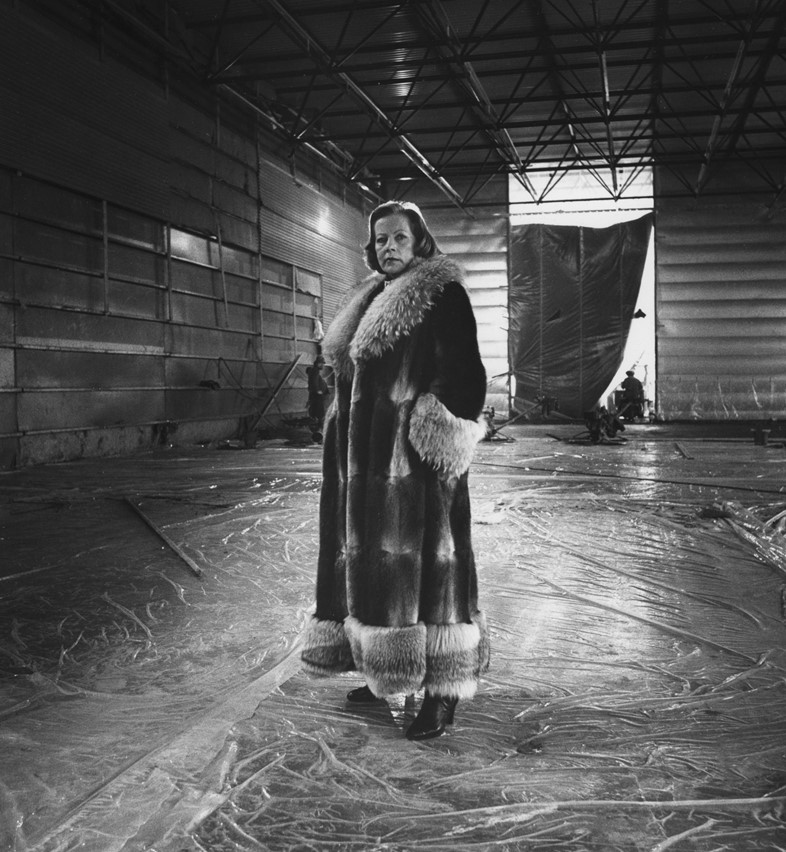
What? Marimekko’s mid-century boom faced a period of difficulty when Mrs Ratia passed away in 1979; without her vision, the house began to suffer. Yet, just over a decade later, entrepreneur Kirsti Paakkanen saw the potential to take Marimekko back to its roots, acquiring the business in 1991 and subsequently quadrupling its dwindling profits. In the late 90s, the brand returned to mainstream prominence after Carrie Bradshaw was seen wearing a Marimekko bikini and dress in Sex and the City (the show later featured Marimekko table cloths as well). It has gone from strength to strength ever since.
“It all started with hand-printing, and this went on until 1973,” explains Juslin. “But we also screen print and use rotary prints today.” These processes are applied to over one million metres of cotton fabric per year, used to make everything from clothing to children’s toys. “Some of our patterns are quite difficult to replicate, as they are designs that were handprinted in our factories in the 1960s.” Subsequently, the contemporary relationship between designers and printers remains close now as ever, and Marimekko products are manufactured on-site in Helsinki, as they always were.

Why? Marimekko holds a close bond with Japan, its aesthetic appealing to their consumer market in particular. “Our Japanese customers love Marimekko, and even today we have dozens of Japanese travellers visiting the printing houses,” says Juslin. “We think it’s because of the amount of nature in Finnish design, which is something we have in common with Japanese design.”
Most recently, Junya Watanabe incorporated a selection of seven existing Marimekko prints into his S/S18 collection. Featuring Joonas, a 1961 design by Maija Isola which takes the form of a repeating eye-like motif, and Tiiliskivi by Armi Ratia, a 1951 black and white brick pattern that reflects her belief in the simple beauty of everyday life, the collection in turn explored Watanabe’s vision to “transform the basic shapes of nature”.
